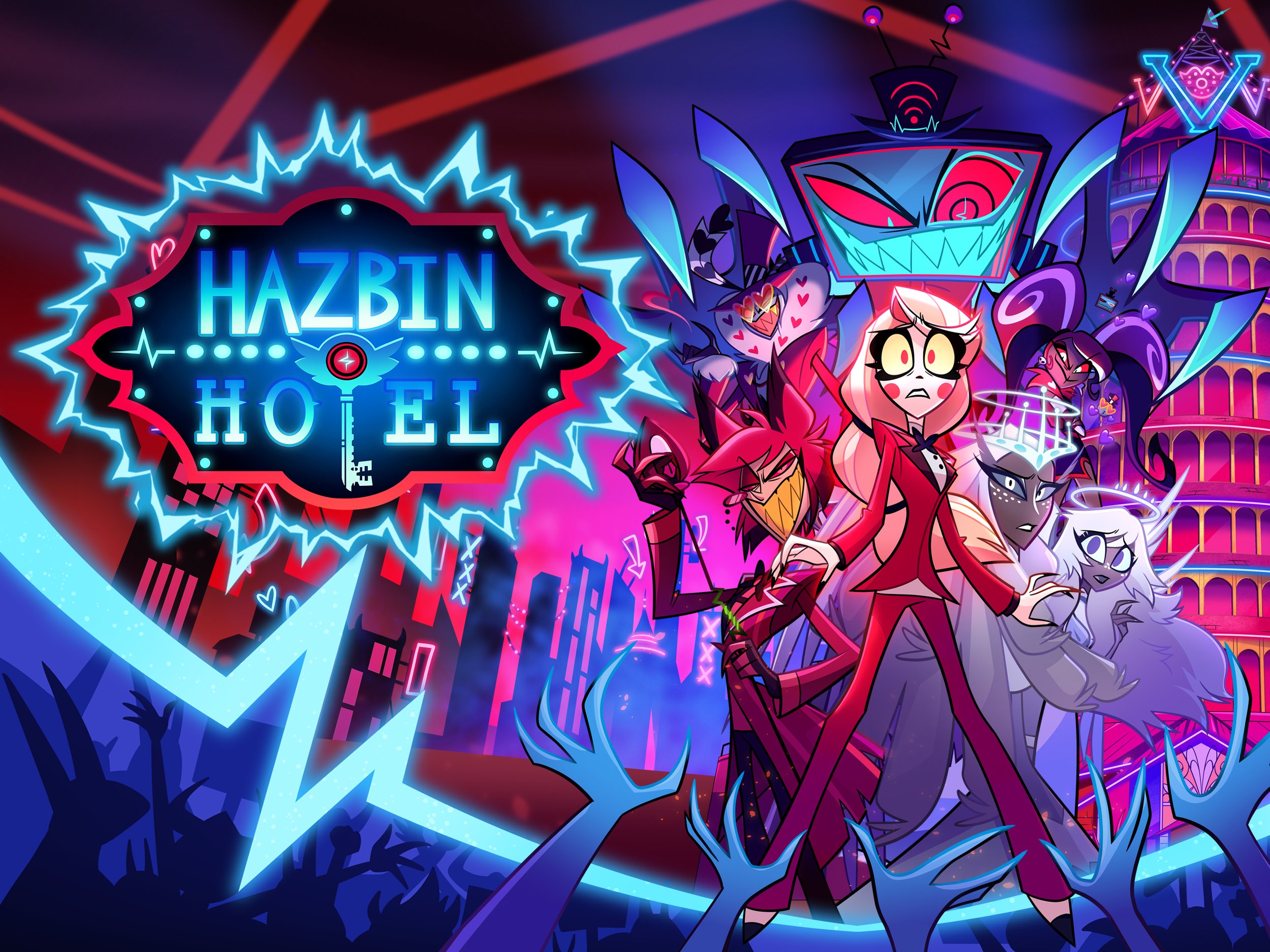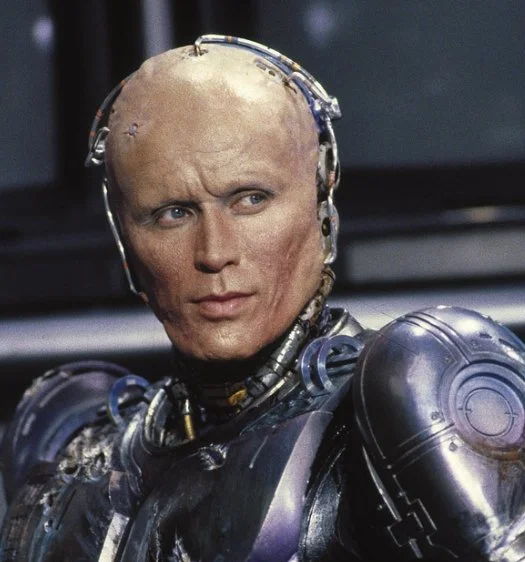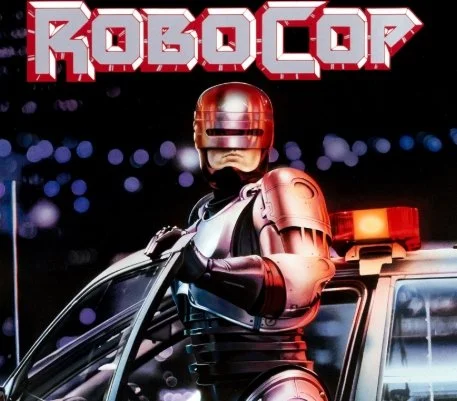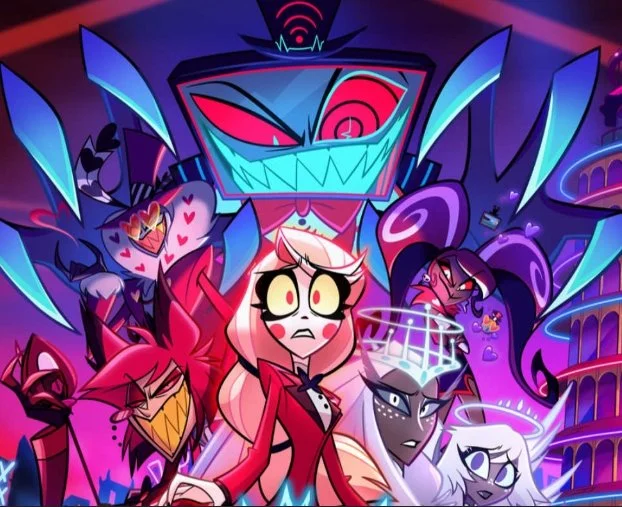Racial Codes in Imagined Worlds: Power, Oppression, and the Legacy of Speculative Fiction
On the surface, science fiction and fantasy are genres of boundless imagination, worlds filled with starships, dragons, mutants, and sorcerers. Their appeal lies in their ability to transport us into realms unbounded by the constraints of reality, offering pure escapism. Yet, beneath these otherworldly landscapes often lie deeply human struggles, particularly those dealing with prejudice, oppression, and hierarchy. For instance, consider the “X-Men” series, which was famously inspired by the Civil Rights Movement in the United States. The marginalized mutants, hunted and feared by society, echo the experiences of real-world minority groups who have faced similar bigotry and systemic discrimination. Or reflect on J.R.R. Tolkien’s “Lord of the Rings,” which has been criticized for coding its various races in ways that mirror real-world ethnic stereotypes; elevating elves to a status akin to a European noble class while casting orcs as inherently barbaric. Another illustrative example can be found in James Cameron’s “Avatar,” which has been read as an allegory of Indigenous and colonial narratives, with the Na’vi representing Indigenous peoples defending their land and culture from exploitative forces reminiscent of historical colonialism.
While sci-fi and fantasy often explore themes of oppression, they also frequently rely on racialized metaphors that reflect real-world biases. These tropes, from noble elves and savage orcs to the heroic white protagonist saving an Indigenous-coded population, persist because they tap into familiar power structures, allow a measure of safe distance through metaphor, satisfy our thirst for power fantasies, and simplify complex issues into binary moral struggles. In doing so, however, they reinforce some of the very inequalities they pretend to critique. This essay examines why these narratives have such staying power, why audiences continue to embrace them, and how the genres might evolve beyond these problematic frameworks.
In this article we will cover:
The Appeal of Familiar Structures: Examining how historical power dynamics find their way into imaginative storytelling.
Using Sci-Fi & Fantasy to Safely Explore Prejudice: Looking at the metaphorical distance that allows for indirect discussion of social issues.
Power Fantasies and the Reversal of Oppression: Considering how narratives often transform persecuted groups into superior beings, offering emotional catharsis but sometimes reinforcing problematic hierarchies.
Binary Morality and the Oversimplification of Oppression: Highlighting the tendency of many speculative stories to reduce moral struggles into simple good-versus-evil.
Deep-Rooted Biases and the Problematic Foundations of Sci-Fi & Fantasy: Addressing how even well-intentioned stories can perpetuate harmful racial or ethnic stereotypes.
Can These Narratives Evolve?: Exploring newer works that challenge old tropes and offering insights into how these genres can continue to grow.
I. The Appeal of Familiar Structures
One of the main reasons racist or racially coded narratives persist in science fiction and fantasy is that these genres have always drawn heavily from real-world history. Even stories set on alien planets or in medieval-inspired fantasy realms are built upon recognizable human structures; kingdoms and empires, nobility and peasantry, conquerors and conquered. These dynamics resonate with us emotionally because we understand them. They mirror our own world’s struggles with authority, power, and prejudice.
Take Tolkien’s legendarium, for example. The races in “The Lord of the Rings” and “The Hobbit” are not just imaginative species existing in a vacuum; they are coded with very human cultural attributes. Elves are tall, elegant, and ancient, brimming with wisdom and a sense of inherent superiority. Dwarves, on the other hand, are stout, industrious, and sometimes depicted as greedy or overly proud. Orcs, described as savage and relentless, often represent the quintessential “Other”, a racialized force of evil with little to no interiority. These traits speak to age-old human stereotypes, reminiscent of how many empires historically viewed their own colonized populations as “barbaric” or “lesser.” While Tolkien was a product of his time and likely did not set out to craft a deliberately racist narrative, the echoes of European colonial attitudes seep into the fabric of his world.
The same dynamic can be observed in many other fantasy and sci-fi realms. Video games like “The Elder Scrolls” series or tabletop role-playing games like “Dungeons & Dragons” assign certain innate characteristics to fictional races: some are noble, some cunning, some savage. These categories provide easy templates for storytelling, enabling audiences to quickly understand who the heroes and villains are. Yet the convenience of these stereotypes also reveals the real world’s lingering biases: an ingrained tendency to map morality onto racial and cultural differences.
Humans naturally respond to stories that affirm or echo societal hierarchies because they are readily intelligible. Whether it’s the highborn aristocrat or the downtrodden peasant, these roles and tensions are woven into our collective consciousness. People may feel a visceral thrill when these classic tropes appear in fantasy or sci-fi, not necessarily because they approve of the real-life hierarchies, but because such tropes feel “true” to how conflict and power typically play out. This familiarity is both a strength and a limitation of speculative fiction. On one hand, it taps into potent emotional truths about human history; on the other, it risks enshrining the same prejudices that have plagued our past.
II. Using Sci-Fi & Fantasy to Safely Explore Prejudice
Another major reason why sci-fi and fantasy lean on oppressive structures is that the imaginative distance of these genres allows for metaphorical exploration of social issues without directly naming real-world groups or conflicts. By presenting bigotry and bias in the form of, say, human-versus-mutant tension, or humans-versus-aliens, authors and filmmakers can create an environment for self-reflection without risking immediate social censure or alienating the audience.
The “X-Men” franchise is among the most widely recognized examples of this metaphorical approach. The mutants who possess unique, often fearsome abilities function as stand-ins for any marginalized group facing discrimination. Stan Lee and Jack Kirby originally framed the mutants as a response to the Civil Rights Movement of the 1960s: characters like Professor Xavier and Magneto were often compared to Martin Luther King Jr. and Malcolm X, respectively, for their differing philosophies on achieving equality. In more contemporary contexts, the persecution of mutants has also become a stand-in for LGBTQ+ struggles, exploring themes of “outing,” acceptance, and the fear of difference.
Similarly, Neill Blomkamp’s “District 9” used science fiction to comment on South Africa’s apartheid and xenophobia. By depicting aliens forced to live in squalid conditions, separated from the rest of society, the film delivered a powerful allegory for the forced segregation that was a reality under apartheid. Audiences could grapple with systemic injustice and societal prejudice without the immediate defensiveness that might arise if the story had explicitly depicted the real-world racial groups involved.
The value of such metaphorical storytelling lies in its ability to bypass the psychological defences people often put up when confronted with uncomfortable realities. By placing the story in a fictional framework, creators can highlight the absurdity or cruelty of prejudice, leading viewers or readers to see real-world parallels for themselves. When the guard is down, empathy can enter. For a brief moment, an audience might think: “How could anyone treat another sentient being like that?” only to realize that this exact behaviour is replicated in our daily news feeds and history books.
However, this approach has its pitfalls. The very distance that allows people to engage with the issue also makes it easy to dismiss the parallels. A viewer might feel satisfaction in condemning the fictional society while turning a blind eye to how similar issues manifest in their own reality. Moreover, the metaphor can become diluted if it never intersects with the real-world struggles that inspired it. This tension between beneficial allegory and escapist erasure underscores the complexities of using sci-fi and fantasy to discuss race and prejudice.
III. Power Fantasies and the Reversal of Oppression
Closely tied to the metaphorical exploration of prejudice is the phenomenon of the power fantasy, a narrative device that flips the script on oppression by granting marginalized or minority-coded groups extraordinary abilities. While this can be exhilarating and empowering, it also risks reinforcing ideas about inherent superiority or “chosenness,” rather than promoting a view of genuine equality and solidarity.
In the “X-Men,” mutants are not just different; they often prove themselves to be more powerful or evolved than their human counterparts. A similar dynamic appears in James Cameron’s “Avatar,” where the Na’vi, though technologically less advanced, have a profound spiritual and physical connection to their environment that gives them an edge over the heavily armed human invaders. In many fantasy settings, persecuted magical folk end up possessing arcane abilities that dwarf those of their oppressors. This can be emotionally satisfying: the oppressed turn the tables, using their unique gifts to triumph over those who sought to dominate them. It scratches a deep-seated itch to see justice served, especially justice meted out by those who were once powerless.
However, this approach may unintentionally propagate another form of hierarchy. If the message becomes “the oppressed are actually superior,” we risk missing the point that no group should be oppressed; superior or not. Oppression is unjust and harmful regardless of whether the oppressed party has special powers or advanced knowledge. By framing the oppressed as secret superhumans, the narrative leans into the idea that one must demonstrate superiority to be worthy of dignity. This in turn can overshadow the reality that social equity should not depend on any group’s ability to fight back effectively.
Another subtle issue with these power fantasies is that they often centralize a single “chosen one” who saves the day, implying that heroic leadership and moral authority are the exclusive domain of an anointed individual. While a thrilling narrative device, it can overshadow collective action and the complexities of broader social movements. Movements against real oppression generally require thousands or millions of people working in concert, rather than one all-powerful figure who swoops in to change everything. In short, the allure of turning the tables on oppression through a singular hero or a “superior” minority group is not without its pleasures, but it also carries the danger of substituting one hierarchy for another.
IV. Binary Morality and the Oversimplification of Oppression
Science fiction and fantasy often rely on clear-cut moral binaries to drive their narratives. The classic “good vs. evil” storyline is easy for audiences to follow and empathize with, which is why so many beloved franchises, from “Star Wars” to “Harry Potter,” adopt it as a core structure. However, real-world oppression is rarely so black-and-white. Systemic racism, classism, and colonialism involve complicated webs of economic, political, and cultural factors; they are perpetuated by individuals who do not always see themselves as villains, but rather as ordinary people acting within a given system.
In “Star Wars,” we see the evil Empire pitted against the virtuous Rebels. While this offers a compelling underdog story, it glosses over the idea that large-scale oppression is often perpetuated by people who are neither cackling Sith Lords nor mindless stormtroopers. The narrative reduces oppression to a singular authoritarian regime that can be toppled, presumably solving the galaxy’s problems overnight. It skips over the complexities of how imperial power structures get built and maintained, how propaganda normalizes them, and how even well-meaning citizens might be complicit in them.
The same can be said for many fantasy novels where a dark lord or a singular villain represents all that is wrong with the world. Defeat the villain, and peace reigns. Such an approach inadvertently trivializes the multifaceted nature of real oppression, which is rarely the sole work of one diabolical mastermind. While binary morality can serve as an effective narrative engine, it may reinforce a simplistic viewpoint: that if we can just root out the obvious “bad guys,” social harmony will flourish.
This oversimplification also appears in the way that oppressed groups are frequently rendered in these narratives. They are almost always morally pure, a unified collective of victims suffering under a monolithic evil. In reality, any marginalized community will have its own internal divisions, disagreements, and moral dilemmas. By removing these complexities, stories risk flattening the humanity of the very groups they aim to represent, diminishing their agency and homogenizing their struggles.
Such binary moral frameworks do have benefits: they make stories more digestible, more dramatic, and often more satisfying. However, if these narratives are meant to be reflections of real-world issues, the black-and-white treatment of oppression can be misleading. It offers a simplistic resolution for conflicts that, in reality, are long, painful processes of negotiation, reconciliation, and structural change. The takeaway is that binary morality, while thrilling in a cosmic battle between Jedi and Sith, can become a narrative crutch that inadvertently perpetuates misunderstandings about how oppression actually works.
V. Deep-Rooted Biases and the Problematic Foundations of Sci-Fi & Fantasy
While many creators have the best intentions, certain foundational tropes and storylines in sci-fi and fantasy are rooted in outdated or openly racist ideologies. These tropes can be difficult to eliminate because they are baked into the DNA of the genres so many classics have, for better or worse, shaped the expectations and frameworks of what makes a fantasy or sci-fi tale “epic.”
Tolkien’s depiction of orcs as inherently savage and morally corrupt has long been pointed out as problematic, drawing parallels to how colonial literature once depicted indigenous peoples as brute and uncivilized. Early pulp sci-fi often mirrored contemporary racial fears, portraying non-human species with traits explicitly coded to represent real-world ethnicities. For example, 1950s and 1960s alien invasion stories were sometimes thinly veiled commentaries on Cold War xenophobia or broader fears of non-white immigration. While these stories might appear innocent or campy today, they reveal a deeper pattern: when we imagine the “Other,” we frequently do so using the stereotypes and biases we already know.
Moreover, well-intentioned creators can inadvertently perpetuate biases if they rely on comfortable tropes. A writer trying to showcase tolerance and acceptance might create a story where humans learn not to fear an alien species, yet still describe that alien culture using stereotypes associated with real-world ethnic groups. The alien society might be framed as “spiritual,” “close to nature,” or “primitive but noble,” echoing the patronizing stereotypes that have historically been used to exoticize Indigenous peoples. Even as the story sends a message of acceptance, it upholds a vision of the “Other” as fundamentally different and mystical, rather than simply another branch of intelligent life.
These issues persist partly because sci-fi and fantasy, like all genres, do not exist in a vacuum. Authors, screenwriters, and artists bring with them the culture, politics, and social prejudices of their time. Unless they actively work to identify and dismantle these biases, they risk replicating them in their stories.
With modern audiences becoming more aware of social justice issues, the challenge intensifies. Fans notice when a beloved franchise fails to address or revise outdated elements, and they increasingly demand more nuanced representations. Classic works remain influential, but they are no longer exempt from critical analysis. What was once accepted as a fun, imaginative story might now be scrutinized for its racial coding and messaging. This tension can spark important conversations about how the genre can evolve to become more inclusive and reflective of current understandings of race and diversity.
VI. Can These Narratives Evolve?
The good news is that evolution is already underway. The speculative fiction landscape has grown to include a broader range of voices, each bringing new perspectives and challenging long-held genre conventions. Authors such as Octavia Butler, N.K. Jemisin, and Nnedi Okorafor have gained critical acclaim not only for the quality of their writing but also for their willingness to address complex social issues; including race, oppression, and intersectionality within fantastical or futuristic settings.
Octavia Butler’s works, such as “Parable of the Sower” and “Kindred,” blend speculative elements with deep explorations of racial dynamics, power, and empathy. N.K. Jemisin’s Broken Earth trilogy, which won her three consecutive Hugo Awards, tackles oppression head-on in a fantastical world where those with power to wield earth-shattering magic are feared, subjugated, and isolated. Jemisin’s nuanced portrayal avoids easy binaries: characters and societies grapple with moral ambiguities, historical trauma, and systemic injustice that isn’t neatly resolved by defeating a single villain.
Outside of literature, projects like Marvel’s “Black Panther” have demonstrated how a blockbuster film can address themes of colonialism and intra-community conflict while celebrating Black culture and excellence in a futuristic, Afrocentric setting. Instead of defaulting to an all-powerful “chosen one,” “Black Panther” explores the responsibilities of leadership, the weight of tradition, and the moral complexities of isolationism versus global engagement. The film’s success points to a shift in audience demand: many viewers want stories that break from the old tropes of paternalistic or simplistic narratives around race and power.
The growing number of marginalized creators in the industry is one of the most significant catalysts for change. These creators are telling stories that reflect their own experiences, which inevitably inject more authenticity and complexity into discussions of race, culture, and identity. For instance, indigenous authors and filmmakers are reworking classic fantasy tropes from an indigenous perspective, challenging notions of “primitive tribes” versus “civilized kingdoms.” LGBTQ+ authors are envisioning worlds where gender and sexuality are treated with nuance, moving beyond reductive allegories. The cumulative effect is a slowly but surely widening range of narratives, each offering a different lens on oppression and how it can be addressed in a fictional context.
Yet, for the genre to keep evolving, creators and audiences alike must remain vigilant. It’s not enough to cheer for a more diverse set of authors; we must also engage critically with the content. Readers, viewers, and gamers should be willing to question the tropes they encounter and support stories that challenge harmful stereotypes. When fans vote with their wallets and their social media platforms, demanding complexity and authenticity, the market responds.
Ultimately, speculative fiction remains a powerful vehicle for exploring societal issues because of its elasticity. Its capacity to mirror and distort our world in infinite ways allows us to examine crucial aspects of humanity from fresh angles. Whether set in a galaxy far, far away or in a land of sorcery, these stories become windows to our collective past and future. If navigated thoughtfully, sci-fi and fantasy can transcend their problematic legacies and become domains where new possibilities for equity and justice are not just imagined but actively modeled.
Simply Put
Science fiction and fantasy transport us to places where dragons roam, mutants rebel, and spaceships voyage through distant galaxies. Beneath all the spectacle, however, lie narratives that often replicate the very real world biases we hope to escape. Hierarchies rooted in human history, allegories for prejudice that maintain a comfortable distance, power fantasies that flip but do not necessarily dismantle oppressive structures, and a pervasive reliance on binary good-versus-evil frameworks, all of these elements have shaped the genre’s portrayal of race and inequality. While these stories can offer profound moments of insight and empathy, they can also reinforce the same unequal systems they seek to critique.
The fact that these racist or racially coded narratives persist speaks to their deep emotional resonance. We are captivated by the timeless appeal of the “underdog rising up,” the clarity of moral binaries, and the grand scale of battles between noble heroes and villainous despots. At the same time, the increasing awareness of social justice issues has led to a wave of introspection and evolution within the genre. More diverse creators are challenging entrenched tropes, bringing fresh perspectives, and crafting stories that refuse to rely on reductive portrayals of race or simplistic morality.
True progress in sci-fi and fantasy requires that both creators and audiences step beyond the easy appeal of familiar hierarchies and question the deeper messages embedded in these narratives. We must learn to recognize when a story romanticizes colonial tropes, exoticizes the Other, or reduces a complex human struggle to a neat allegory. We must also support works that push boundaries, offering nuanced, multi-layered worlds that mirror the true complexity of human society. Only then can science fiction and fantasy, genres of limitless imagination, fulfil their true potential as sites of transformative storytelling, helping us not just escape our world but reimagine it.
References
BBC World Service - In the Studio, Nnedi Okorafor: Creating sci-fi worlds
Bettelheim, B. (1977). The uses of enchantment: The meaning and importance of fairy tales. Vintage.
Hooks, b. (1992). Black looks: Race and representation. South End Press.
Jemisin, N. K. (2018). How long 'til Black future month? Orbit.
Lakoff, G., & Johnson, M. (1980). Metaphors we live by. University of Chicago Press.
Langer, J. (2011). Postcolonialism and science fiction. Palgrave Macmillan.
Nama, A. (2008). Black space: Imagining race in science fiction film. University of Texas Press.
Nama, A. (2011). Super Black: American pop culture and Black superheroes. University of Texas Press.
Said, E. W. (1979). Orientalism. Vintage.
Young, H. (2015). Race and popular fantasy literature: Habits of whiteness. Routledge.















